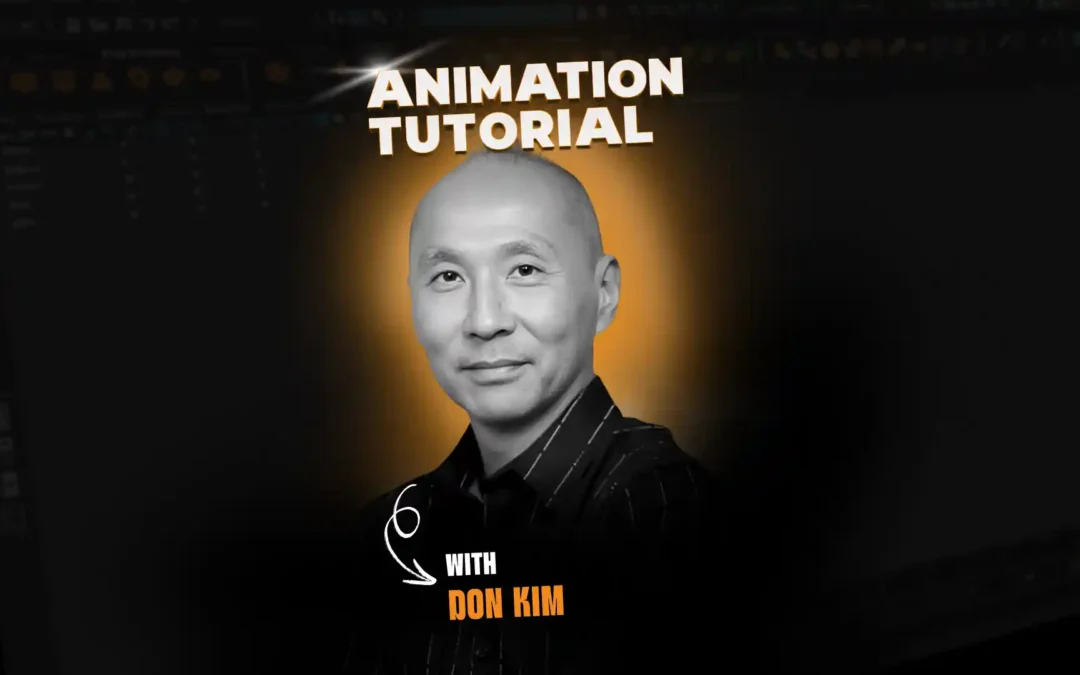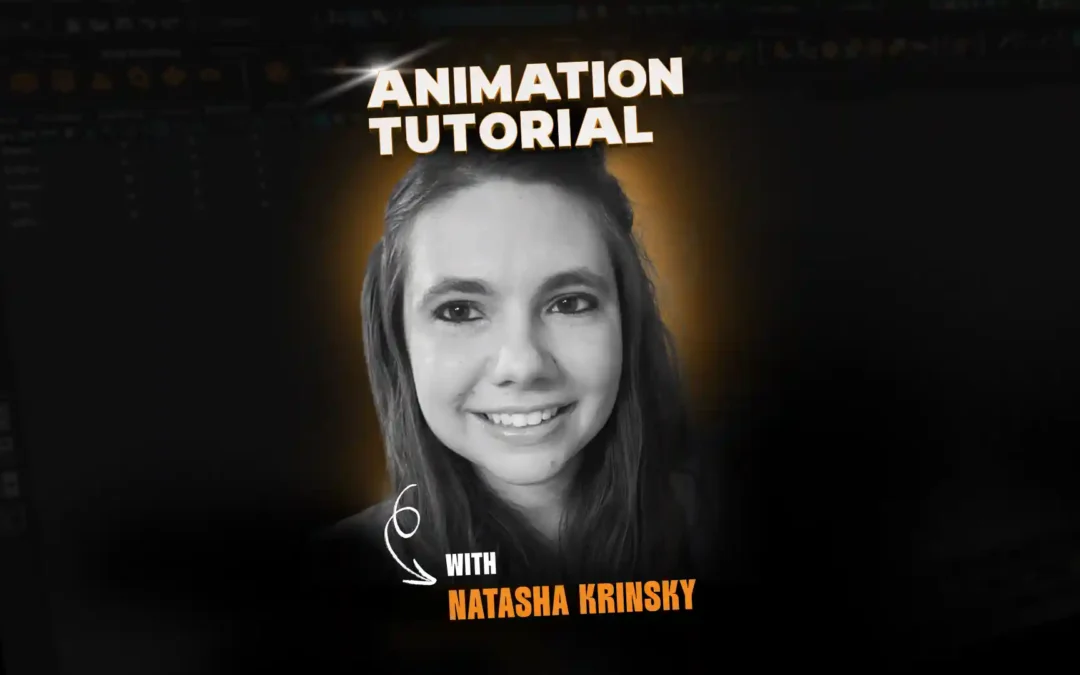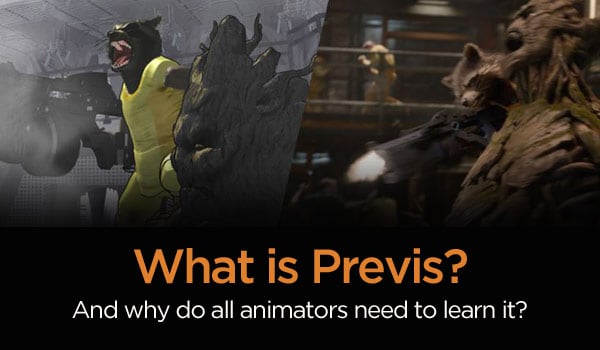
The art of making entertainment has been evolving from the very beginning. Now with animation, the process of visualizing a product has moved from storyboards to animatics to previsualization animation—commonly called Previs! To learn more about what goes into Previs, we asked Nicole Herr, Senior Previs Character Animator for The Lion King, Rampage, and The Jungle Book and also the mentor for our Previsualization for Animators Workshop!
What exactly is Previs?
According to the Oxford Dictionary, Previs is: The visualization (now especially through the use of computers) of how something will look when created or finished.
Ultimately, previs is the process of imagining and planning a final product. The previs team works with a client or director to quickly create an idea of what cameras, performances, effects, stunts, etc. may be needed for them to film. It’s a faster, and hopefully less expensive, way to premake a film or sequence so they have a visual blueprint of the final product. It also gives the client the ability to make changes before they even start to film.
Why is it important to learn previs?
Previs has become more mainstream in the entertainment industry. Most of the major blockbuster films use previs on a regular basis—just look at the credits for the latest VFX film. Chances are, you will see at least one of the many facilities that do previs credited. Some films previs every frame you see, and some only do a sequence or two. And it’s not just the heavy fight sequences that are prevised, it’s also many of the acting shots too. The biggest reason to learn previs is to learn how to quickly lay in performances and cameras in a way that is actually filmable. This is why ALL animators should learn at least some previs.
Learn the art of Previs with our 6-week workshop!
As a previs artist, what has your experience been, and how has it changed?
The first time I really worked with it was on
Jungle book was the first time I worked on a film that was prevised completely. Every frame in the film had to be animated in 360. We animated long sequences, some were thousands of frames long, so that the cinematographer and director could put the camera anywhere in the world without being constrained to frame limits and one camera angle. We gave ideas of what a camera could be, but ultimately, the final camera work was filmed in virtually in a mocap stage by the client.
The biggest reason to learn previs is to learn how to quickly lay in performances and cameras in a way that is actually filmable. This is why ALL animators should learn at least some previs.
When I worked on the DC TV shows—Legends of Tomorrow, Supergirl, The Flash) we did a lot of previs on the VFX-heavy sequences. As the previs lead on those shows for Encore, I had the animators use the final assets so that we could use that as the basis for the final animations. Not only did we do our own previs, but in many cases that previs became the blocking for the final shots.
Other than film, have you prevised any other products?
Yes, I have worked on many films, but I have also worked on television shows, commercials, virtual reality, games, and even a theme park pitch as a previs artist. Ultimately, previs is not limited to only one part of one industry, it can be used in many different industries to help show what is possible.
How has previs changed over the years?
When I started in the industry, previs was primarily be done with storyboards, photography, and illustrations. They would then be cut together by an editor to create an animatic for the director to follow. Now, with the addition of 3d animation, we take the script and/or animatic and make it into a rough animation so the client can work out timing and cameras in a way that is filmable.
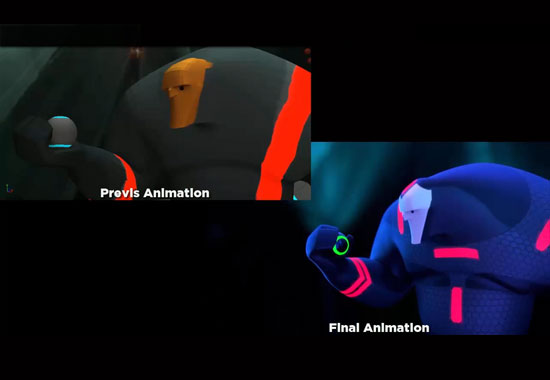
An example of previs vs. final animation
At this point there are many companies that solely do previs and postvis. Those companies send artists to the client’s office or set so that they have direct access to the artists. Every time I have worked at the client’s location, I find that it makes for a very creative collaborative experience.
What is the future of previs?
I wish I had a crystal ball, but previs is a constantly changing art that is definitely here to stay!
Read more from Nicole and be sure to check out our other new workshops, Intro to Digital Painting and Visual Development: Principles of Design.
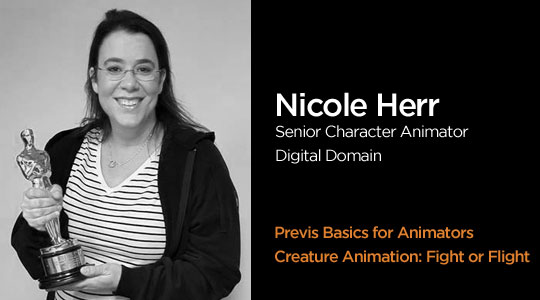
Learn previs animation with Nicole Herr!
Learning previsualization is a great way to push your animation skills! In this workshop, you’ll learn how animation and camera work are used to help take a project all the way from script to screen.
You’ll also build on your existing animation abilities by: learning how to read a script, planning a sequence, experimenting with cameras, and adding temporary effects. By the end of this workshop, you will have taken part of a script and created your own previs sequence.
